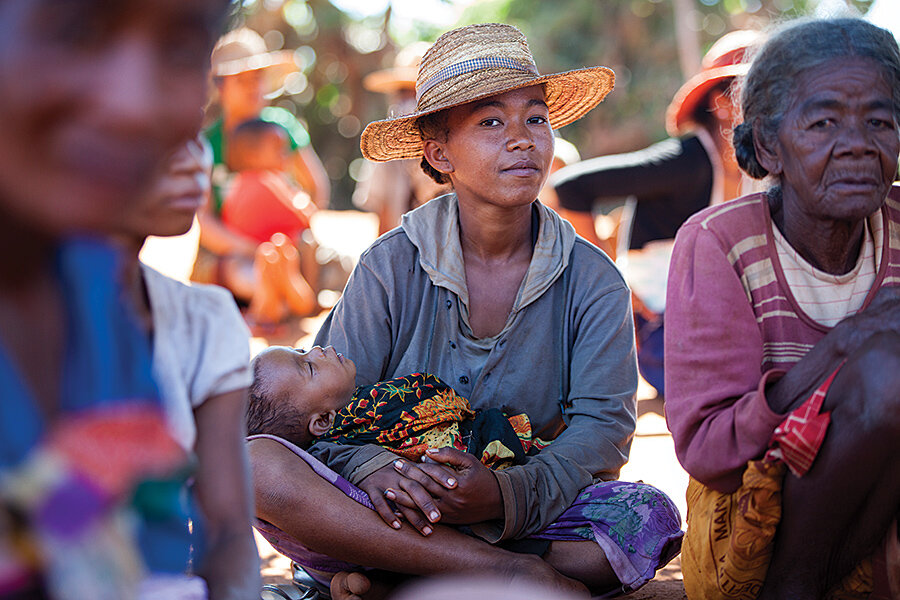Staving off starvation
Mobilizing the world to respond to famine often follows a familiar narrative: Mass starvation strikes a country. The United Nations and aid organizations rattle the tin cup for international support. Emergency aid flows in. The cycle repeats when the next crisis hits.
Yet these days the UN and relief groups are emphasizing a different approach. They are warning about impending mass starvation early, before it becomes acute, and trying to fashion programs that build “resiliency” so rural areas don’t cycle in and out of despair.
Africa provides a test of how well this effort is working, since famine is stalking the continent again. The UN said earlier this year that civil wars and uncivil droughts threaten some 20 million people with starvation – especially in Nigeria, South Sudan, Somalia, and Yemen.
The world has responded since then, though the outlook remains grim.
The Monitor responded, too. We sent in three staff writers and a staff photographer to find out what lessons have been learned from past droughts and famines. There is, of course, no way to prevent a paucity of rain or eliminate hunger. But aid groups and others are taking steps that are saving individual lives and, in some cases, entire villages.
It might be something as simple as a storage tank that conserves rainwater, or a drought-resistant sweet potato. More broadly, Ethiopia, the symbol of mass starvation in the 1980s, has become a model for early warning and preventive action.
Covering a story like this isn’t easy. It took several months to obtain visas and get reporters to affected areas. Scott Peterson never did get permission to enter war-torn Yemen. Ryan Lenora Brown and Melanie Stetson Freeman were shadowed by a government minder everywhere they went in Ethiopia, which has notoriously tight press restrictions.
It’s a difficult subject to cover emotionally, too. For Scott, it elicited disquieting memories of reporting on the horrific Somalia famine of 1992. Melanie, who has traveled to more than 70 countries as a Monitor photographer, found this “one of the hardest trips I’ve ever taken.”
After one particularly arduous day, she and Peter Ford arrived with aid workers in a remote village in Madagascar. They were met by mothers and malnourished children all dressed in their finest, welcoming them with a joyous dance. Melanie says that night, feeling overwhelmed, she “finally fell apart” talking to her husband via Skype. (Read more about her experience on page 41.)
As challenging as it is to report on famine, it’s infinitely more painful for those forced to cope with it. Ryan writes a telling piece about a young couple – childhood sweethearts – who had to cancel their wedding because the drought had claimed too much of the family herd. The groom couldn’t pay the dowry of 10 camels and 10 cattle to marry her.
When writing about suffering in the developing world, Ryan says she is guided by the motive that undergirds all Monitor coverage of such events: telling stories that elicit understanding and empathy, not pity and hopelessness.






